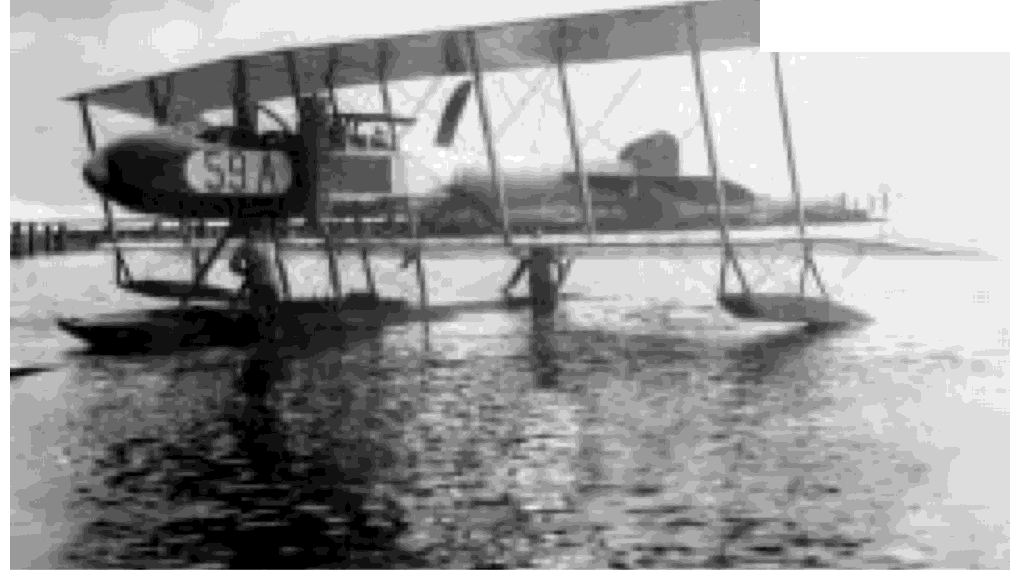
1916-Continued
13 May
The Chief of Naval Operations requested
appropriate bureaus to undertake development of
gyroscopic attachments for instruments and equip-
ment, including compasses, bombsights, and base
lines, the latter being a forerunner of the turn and
bank indicator.
20 May
Development of a gyroscopically operated
bomb-dropping sight was initiated with the allocation
of $750 to the Bureau of Ordnance to be used in plac-
ing an order with the Sperry Gyroscope Company.
22 May
The Naval Observatory sent a color camera,
made by the Hess-Ives Corporation, to the Naval
Aeronautic Station at Pensacola, Fla., to determine
whether color photography would be of value in aero-
nautic work.
3 June
Formal instruction in free and captive bal-
loons was instituted at Pensacola, Fla., when the
Secretary of the Navy approved a course proposed by
Lieutenant Commander Frank R. McCrary, and directed
that it be added to the Bureau of Navigation Circular
"Courses of Instruction and Required Qualifications of
Personnel for the Air Service of the Navy."
9 June
Lieutenant Richard C. Saufley, on an
endurance flight in the AH-9 over Santa Rosa Island
off Pensacola, Fla., crashed to his death after being in
the air 8 hours and 51 minutes.
20 June
A General Order, superseding that of 23
June 1913, was issued defining cognizance for aero-
nautics in the Navy Department. In addition to extend-
ing the subject from "Naval Aeroplanes" to
"Aeronautics," this order embraced lighter-than-air and
-
I
Experimental Gallaudet, propeller
in
the fuselage 1061646
UNITED STATES NAVAL AVIATION
1910-1995
19
certain heavier-than-air components that were not pro-
vided for in the earlier order.
12 July
The AB-3 flying boat, piloted by Lieutenant
Godfrey deC. Chevalier, was catapulted from
North
Carolina
(ACR 12) while underway in Pensacola Bay,
Fla. The launch completed calibration of the first cata-
pult designed for shipboard use;
North Carolina
became the first ship of the U.S. Navy equipped to
carry and operate aircraft.
17 July
The first flight of the Gallaudet 59-A, a novel
airplane with the propeller mounted in the fuselage aft
of the wings, was made at Norwich, Conn., by David
H. McCulloch and witnessed by Navy Inspector
Lieutenant Ug) George D. Murray.
18 July
Flight clothing allowances were established
by the Secretary. Aviators were to be furnished hel-
mets, goggles, and safety jackets. Enlisted men whose
duties involved flying were to receive, in addition,
wool head cover, suit, gauntlets, and boots.
22 July
Serious interest in the development of light
metal alloys for aeronautical use led Chief Constructor
Rear Admiral David W. Taylor to request that the
Aluminum Company of America apply its resources to
the development of a suitable alloy, and for use in
fabrication of Zeppelin-type girders.
8 August
The Secretary clarified the place of avia-
tion in the departmental organization by redefining the
responsibilities of bureaus and offices for specific ele-
ments of the aviation program. While the new direc-
tive followed the division of cognizance over material
established by the General Order of 20 June 1916, it
went further in that it assigned the General Board
responsibility for advising as to the numbers and gen-
eral characteristics of aircraft, and in effect made the
Bureau of Construction and Repair a lead bureau for
aircraft development and procurement.
10 August
Negotiation for the first aircraft produc-
tion contract began with a telegram to Glenn H.
Curtiss requesting him to "call at the Bureau
[Construction and Repair] Monday with a proposition
to supply at the earliest date practicable thirty school
hydro aeroplanes." Specified characteristics included:
two seats, loading of about four pounds per square
foot, and power loading of about twenty pounds per
horsepower. The telegram concluded, "Speed, climb
and details of construction to be proposed by you.
Rate of delivery is important and must be guaranteed."
This telegram resulted in a contract for thirty N-9s
which were delivered between November 1916 and
 |
19 |
 |